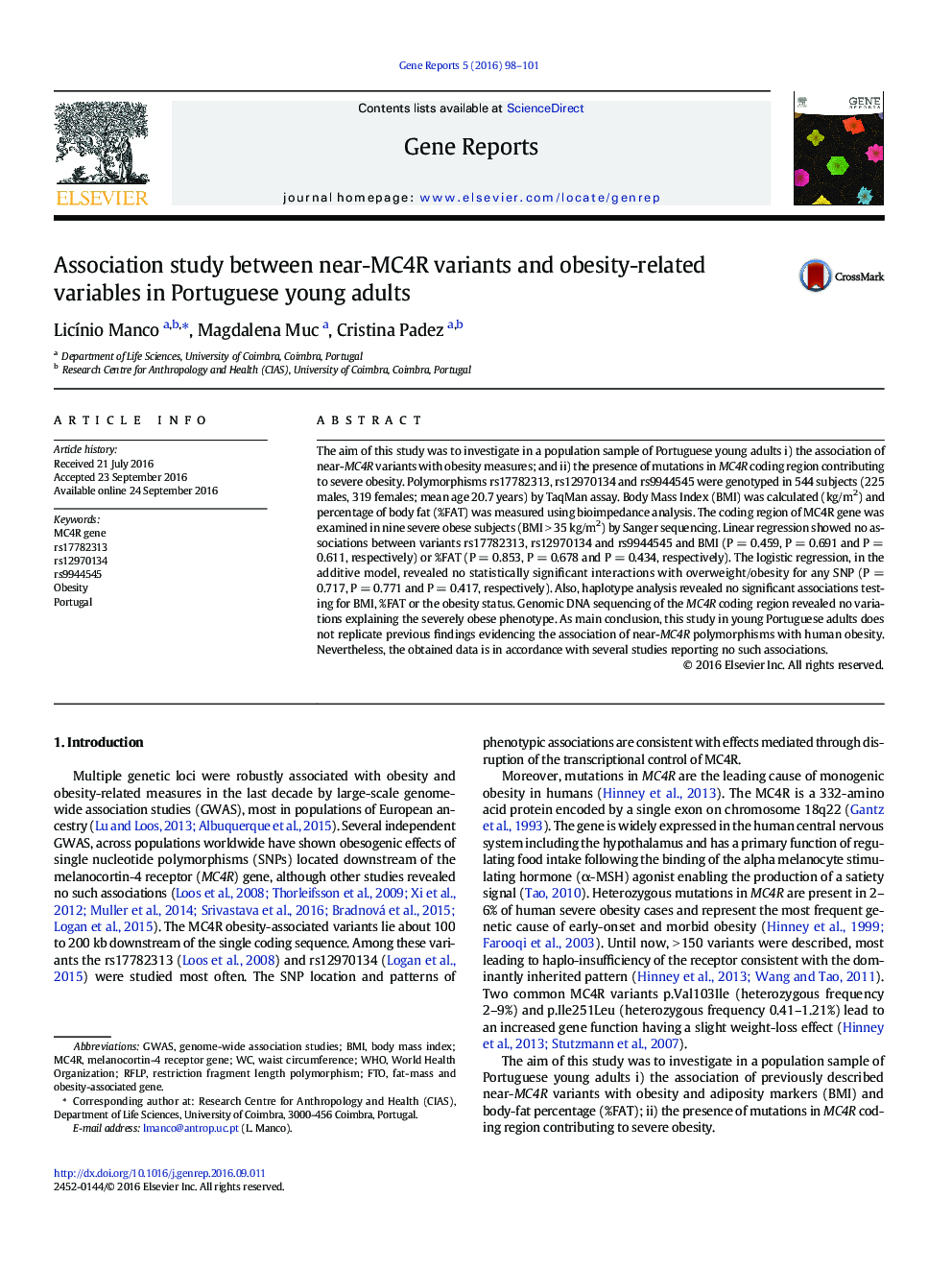| Article ID | Journal | Published Year | Pages | File Type |
|---|---|---|---|---|
| 8646282 | Gene Reports | 2016 | 4 Pages |
Abstract
The aim of this study was to investigate in a population sample of Portuguese young adults i) the association of near-MC4R variants with obesity measures; and ii) the presence of mutations in MC4R coding region contributing to severe obesity. Polymorphisms rs17782313, rs12970134 and rs9944545 were genotyped in 544 subjects (225 males, 319 females; mean age 20.7Â years) by TaqMan assay. Body Mass Index (BMI) was calculated (kg/m2) and percentage of body fat (%FAT) was measured using bioimpedance analysis. The coding region of MC4R gene was examined in nine severe obese subjects (BMIÂ >Â 35Â kg/m2) by Sanger sequencing. Linear regression showed no associations between variants rs17782313, rs12970134 and rs9944545 and BMI (PÂ =Â 0.459, PÂ =Â 0.691 and PÂ =Â 0.611, respectively) or %FAT (PÂ =Â 0.853, PÂ =Â 0.678 and PÂ =Â 0.434, respectively). The logistic regression, in the additive model, revealed no statistically significant interactions with overweight/obesity for any SNP (PÂ =Â 0.717, PÂ =Â 0.771 and PÂ =Â 0.417, respectively). Also, haplotype analysis revealed no significant associations testing for BMI, %FAT or the obesity status. Genomic DNA sequencing of the MC4R coding region revealed no variations explaining the severely obese phenotype. As main conclusion, this study in young Portuguese adults does not replicate previous findings evidencing the association of near-MC4R polymorphisms with human obesity. Nevertheless, the obtained data is in accordance with several studies reporting no such associations.
Keywords
Related Topics
Life Sciences
Biochemistry, Genetics and Molecular Biology
Genetics
Authors
LicÃnio Manco, Magdalena Muc, Cristina Padez,
